In praise of the Guided Walk
- Complaining about the Mainland - 17th August, 2024
- New island designation – is it just greenwash? - 26th April, 2024
- Police and Crime Commissioners – a solution or a problem? - 21st April, 2024
Arriving in the car park, there are a few already there – standing expectantly, leaflet in hand, booted and brightly coloured outdoor gear. The sight of a council van confirms to them they’re in the right place, then out gets the ranger, and the latest guided walk is about to begin.
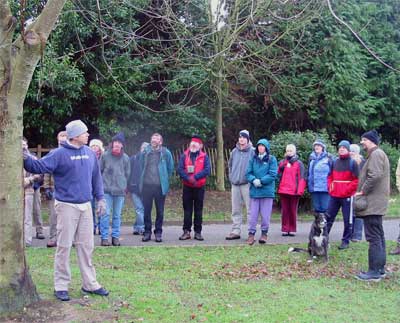
It’s a typical scene in the recreational countryside, and has been, in some form or other, since rangering first began in earnest in the UK with the advent of National Parks after the second world war. Just last week, I led a walk as a part of the Isle of Wight Walking Festival, which finishes today. Over three hundred walks organised over two weeks – and thousands of happy walkers, to whom my modest contribution was a mere dozen or so. Yes, the guided walk is alive and well, and remains the mainstay of face-to-face interpretation techniques despite sixty years of huge changes in the way in which we live in, work in, and perceive the countryside. But what makes this hoary old dinosaur keep going? Surely we have developed some better ways to engage people in the countryside by now. Is the guided walk just a habit we can’t seem to break, or an anachronism overdue for retirement? I’d say neither. And here’s why. First it might be worth looking at a couple of the perceived downsides of the guided walk. There’s a lingering suspicion, even in countryside interpretation, that traditional guided walks are not politically correct, appealing as they do to middle-class, affluent white people over 35. In 2005 the Lake District National Park Authority notoriously cut the funding to support free guided walks run by volunteers, on the grounds that walkers were too “white, middle class”. Following a media hue-and-cry this decision was reversed, but the concept is not new, nor indeed is the basic assertion wrong. Walks don’t attract all sections of the population, never have done – and indeed probably never will. In 2002 Trevor Phillips, chair of the Commission for Racial Equality described the absence of black and Asian faces from the countryside as a form of “passive apartheid“. But, helpfully, following the Lake District incident this issue was discussed widely and some sensible conclusions were aired, from sources including the Black Environment Network. It is now more obvious (as with many other analogous situations) that any proposed solution to this inequality should not cut back on the offering to the existing beneficiaries, but rather make more, perhaps different, provision for others. In other words, don’t cut off your nose to spite your face.
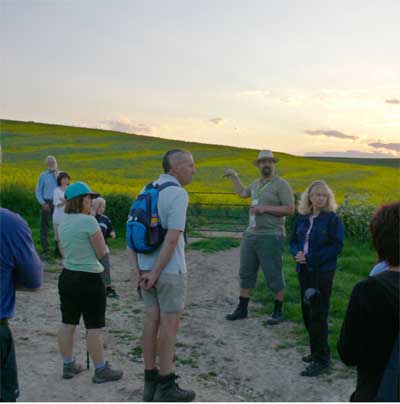
Another criticism of the guided walk is its impermanence and expense. Staff time is a costly and recurring budget item for countryside managers, and even if guided walks are run by volunteers as in the Lake District, somebody has to organise them and publicise the walks. Furthermore, once done, what is there to show for it? An empty car park and another statistic on the returns form. For these reasons funders and land managers often prefer more tangible forms of interpretation, such as signboards, leaflets, and trails. These obviously will reach more people, and last longer. The success of a signboard can also be much more clearly monitored – at least in terms of its presence. What cannot easily be assessed is the effect of written interpretation, and the problem with these other traditional forms of interpretation is that they are merely physical. Even the cleverest and most beautifully-crafted leaflet cannot interact and learn from its audience, and therein lies the difference – that human interface is a two-way process, and the benefits that process can bring in both directions are often forgotten. I don’t do many guided walks any more, so I enjoy the ones I do all the more. There was a time when I would do one or two a month, and if you count school groups as well even several a day on busy days towards the end of the summer term. By the end of the week I’d be hoarse and would dream about Fat Maggie the Witch (a story about trees I would tell to the youngsters). But it was hugely rewarding work, and very much informed the decisions I made the rest of the time. Speaking to visitors, especially those coming to my sites for the first time, was a great way to find out what people were interested in, and what they were not. Trying different walks could ‘market test’ different approaches. I’ve done walks dressed as a mediaeval monk; wearing a bear costume; and even did one where I ended up sitting on a throne and wielding a magical sceptre. As you do. Walks also could be used to achieve our own site management goals. On a site where locals didn’t want to go in because they feared vandalism we devised walks that would appeal to young mums with buggies, and timed them so they would bring the little ones while the bigger kids were in school. We worked out other walks that would appeal to older kids, starting in the evening when perhaps they’d otherwise be out setting light to the place. The infinitely flexible format of walk-and-talk seems to be so well-understood that few would never find some kind of guided walk to their taste. One of the greatest discoveries I made early on in my career was that people love ghost stories. Truth is optional, although one has to at least make an effort to pretend the story is true. But for a good ghost walk you can expect dozens, maybe even hundreds of attendees. These walks are now done very professionally and people even make a living from it in some cases. But for me it proved to be a good way to tell people about the history and origin of their own local countryside sites. Ghost stories, adapted suitably, can teach about land management, about previous landowners and estates, life in times gone by and about local historical events. They also seem to captivate the imagination in a way that no other stories do. I was surprised and delighted a few years ago when I was telling stores at a ghost walk and a good number of the kids turned up wearing ghost costumes of various types. Nobody had asked them to, they just did. When next I do a ghost story walk I’ll add that suggestion to the poster. It added greatly to the fun atmosphere. This kind of interaction is why guided walks are great. There’s every reason to try new ways to interpret our landscapes, and no doubt new ideas and gadgets will keep coming. The points made about accessibility are valid, and the guided walk can never be the only solution. But still it can always be a part of almost any interpretive project at all. I’ll always hold a special place what I would call for the purest form of interpretation, the most direct, and the most real.

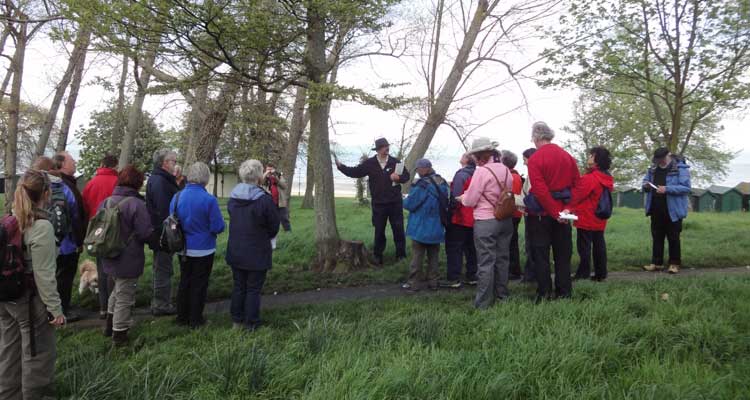
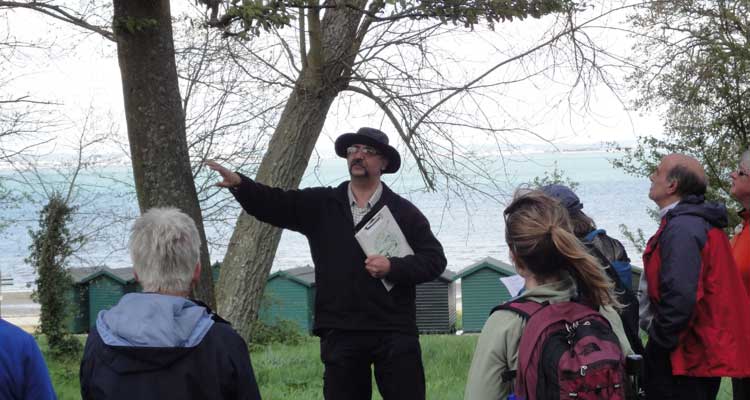
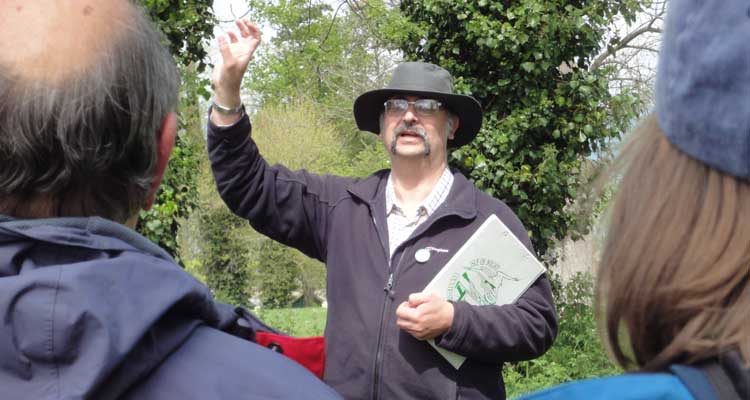

I don’t know about the political issues you’re into here, but the problem as I see it is in your opening sentence: ‘Arriving in the car park…a council van confirms to them they’re in the right place..’
Why do so many guided walks start and end in car parks?
Wouldn’t it be more environmentally sound to use the bus – at least when going out for a stroll?